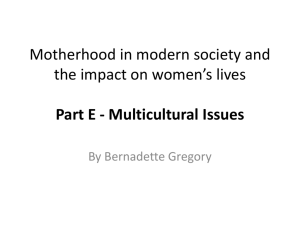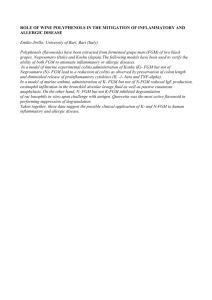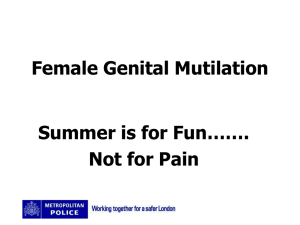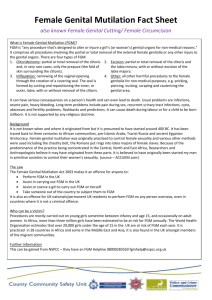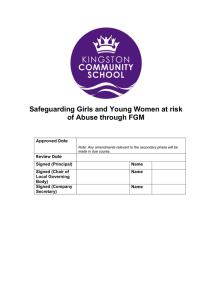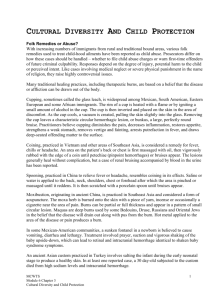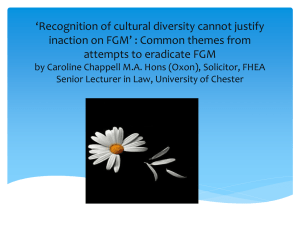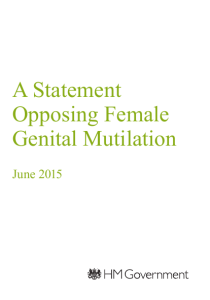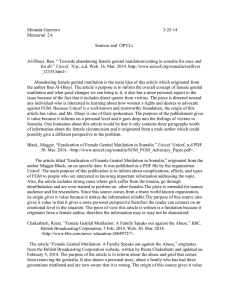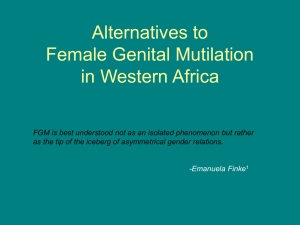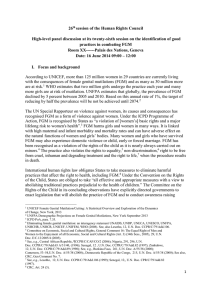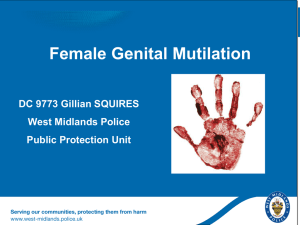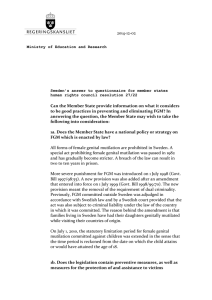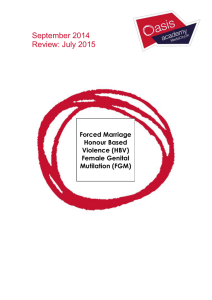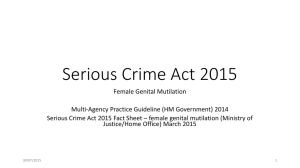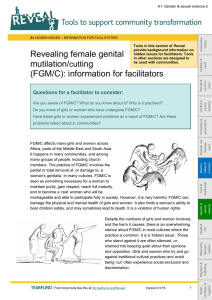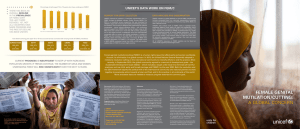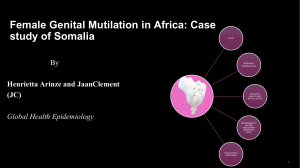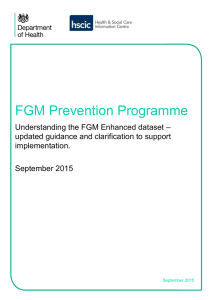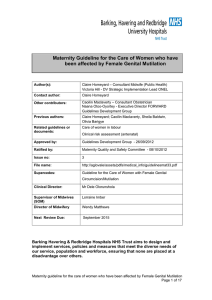UCLH Presentation on FGM PPT, 4.26 MB
advertisement
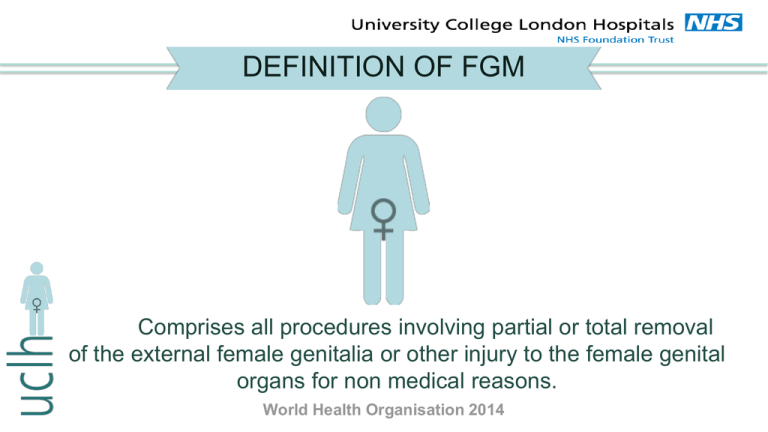
DEFINITION OF FGM Comprises all procedures involving partial or total removal of the external female genitalia or other injury to the female genital organs for non medical reasons. World Health Organisation 2014 A RIGHTS-BASED APPROACH Female genital mutilation (FGM) violates the following human rights The right to be free from gender discrimination The right to life and physical integrity The right to health The rights of the child All children shall enjoy special protection, and shall be given opportunities and facilities, by law and by other means, to enable them to develop physically, mentally, morally, spiritually and socially in a healthy and normal manner and in conditions of freedom and dignity Declaration of the Rights of the Child 1959 Prevalence of Female Genital Cutting Scaled 2011 KEY COUNTRIES OF ORIGIN Countries with the highest prevalence are: • Somalia (98%) • Guinea (96%) • Djibouti (93%) • Egypt (91%) • Eritrea (89%) • Mali (89%) • Sierra Leone (88%) • Sudan (88%) • Gambia (76%) • Burkina Faso (76%) • Ethiopia (74%) - UNICEF WHEN AT RISK OF FGM At birth Infancy Malaysia many under 1 year Neonatal period In Nigeria, Eritrea and Mali, most girls undergo FGM be-fore the age of 5 Teenagers After birth of a child In Somalia and Chad, most girls undergo FGM between the ages of 5-9 years In Kenya and Egypt, most girls undergo FGM after the age of 10 Childhood Before or at marriage In 50% of cases FGM is carried out before the age of five MISCONCEPTIONS • Social obligation/ acceptance/ rite of passage • Reducing sexual desire, fear of clitoris and sexuality, keeping virginity • Religious requirement • Readiness for marriage and adulthood • Purify the body/clean, aesthetics • Protects against material want FGM TYPES Normal Female Genital Anatomy WHO FGM Classification: Type IV UNICEF: cut/nicked, no flesh removed UNICEF: Cut and flesh removed with or without stitching UNICEF: Cut and flesh removed UNICEF : Cut, flesh removed and sewn closed COMPLICATIONS OF FGM • Haemorrhage • Sepsis • Death • Urinary retention • Tetanus and gangrene • Infections (e.g., HIV, Hepatitis) Immediate/short-term consequences Long-term consequences • Recurrent urinary infections • Keloid scarring and cysts • Complications in pregnancy • Painful menstruation • Infertility • Pain during intercourse THE UK LAW Female Genital Mutilation Act 2003 makes it a criminal offence for any UK national or permanent resident to mutilate the whole or any part of a girl or woman’s genitalia Or to aid, abet, counsel or procure the carrying out of FGM in the UK As well as to have it carried out abroad, even in countries where the practice may be legal BROACHING THE TOPIC Using the term mutilation may be upsetting to some patients Try to be sensitive and use value-neutral terms • Have you been cut down there? • Were you circumcised? • Have you been closed? Safeguarding women with FGM and girls at risk of undergoing FGM is everyone’s responsibility What can YOU do? Prevention and Support Suspicion of FGM Liaise with local support/communities e.g. FORWARD charity Identify girls at risk Empower and support affected girls and young women (both those at risk and survivors) Treat as Child Abuse - Follow MultiAgency Practice Guidelines: Female Genital Mutilation (2011). Implement awareness campaign/passport Document and collect information and share it systematically
